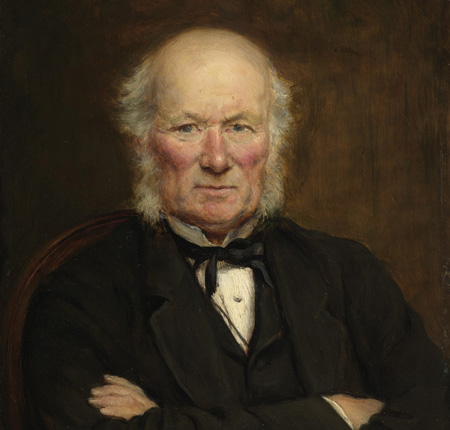
|
Portrait of William Pengelly, by 'A M', 1881. Archive ref: GSL/POR/11.
|
William Pengelly (1812-1894) was a self-taught mathematician and natural scientist. He had moved to Torquay around 1836 to open a school, but later gave it up to lecture on subjects including astronomy, geology, palaeontology and archaeology around the country.
Pengelly was interested in the geology of Cornwall and Devon, particularly its caves and their connection to human prehistory. Under the auspices of the Torquay Natural History Society, he had excavated the local Kent’s Cavern, in 1846 and found, like McEnery 20 years before, evidence of ancient man-made tools. Yet because the site had been excavated multiple times it made it difficult to determine (and more importantly prove) that the finds were truly contemporaneous with each other.
Brixham Cave, however, was an untouched site.
Brixham Cave Committee

|
| 'Sketch map of the district around Brixham from Joseph Prestwich, “Report on the exploration of Brixham Cave conducted by a committee of the Geological Society, and under the superintendence of Wm Pengelly, Esq, FRS, aided by a local Committee; with descriptions of the animal remains by George Busk, Esq, FRS, and of the Flint implements by John Evans, Esq, FRS", published in 'Philosophical Transactions of the Royal Society', vol 163 (1873). |
The letter below from William Pengelly details the circumstances surrounding his first being made aware of the new cave and alerting the Geological Society to its existence. He first heard about the site in February 1858 and had initially planned to excavate it under the same arrangement as he had Kent’s Cavern. However the prohibitive cost for the lease requested by the owner was outside of the scope of the Torquay Natural History Society’s finances. In April 1858, the geologist Hugh Falconer (1808-1865) visited Pengelly and learning of the new cave wrote to the Geological Society to request help.
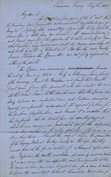
|
|
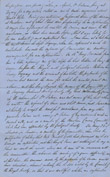
|
|
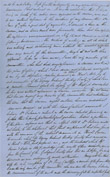
|
|
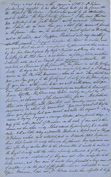
|
|
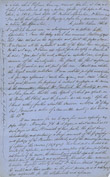
|
|
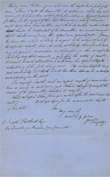
|
Letter from William Pengelly to Joseph Prestwich, 21 July 1865. Archive Ref: LDGSL/8. Click to enlarge.
|
The Geological Society set up a committee initially with a budget of £100. When this ran out, further funding was provided by the Royal Society. Hugh Falconer was made its chair and William Pengelly was placed in charge of excavations. Other notable members of the Brixham Cave Committee included Andrew Crombie Ramsay, Richard Owen and Sir Charles Lyell who, according to the letter, were infrequent visitors to the Cave, Pengelly being the only member present for all the important finds. In spite of this, Pengelly complains in his letter, he was not going to be allowed to be the author of the official report.
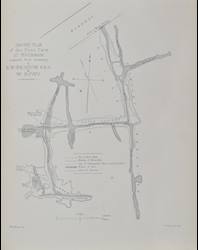
|
|
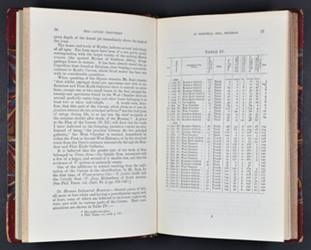
|
| 'Ground plan of the Bone Cave at Brixham...' from Joseph Prestwich, “Report on the exploration of Brixham Cave... 'Philosophical Transactions of the Royal Society', vol 163 (1873). Click to enlarge. |
|
‘Table of Human Industrial Remains’, from William Pengelly, “The Cavern Discovered in 1858 in Windmill Hill, Brixham, South Devon”, ‘Transactions of the Devonshire Association for the Advancement of Science, Literature & Art’, 1874. Click to enlarge |
Pengelly published his own accounts of the excavations at Brixham Cave which he refers to as ‘Windmill Hill Cavern’. The exploration work finished in mid-1859 and had found over 11,000 bones of around 20 species of animals identified by Hugh Falconer. No human remains were discovered amongst the bones of extinct bear, rhinoceros, reindeer, horse, mammoth, lion and fox species, but 36 hand-worked flints were.
This table details the date when each flint was found, along with its exact location in the cave complex.
<<Back to main page
Next: Joseph Prestwich and the Valley of the Somme>>